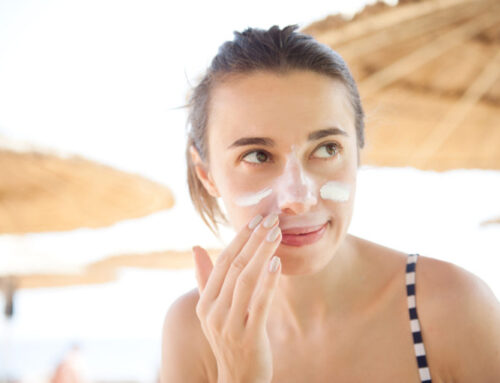
As the weather starts to warm up, many of us are considering buying sunscreen to shield our skin during the summer season. However, with so many options available, it can be challenging to determine the best SPF for our skin type. Choosing the appropriate SPF is crucial to prevent sunburns and blisters, but what does SPF signify, and how do you know which SPF is suitable for your skin?
What’s SPF?
SPF stands for “Sun Protection Factor” and has been the most commonly used system for measuring the level of protection provided by sunscreens since its creation in 1974. Sunscreens are available in a range of factors, from 2 to 100. These numbers indicate the fraction of the sun’s UVB rays that can penetrate the skin when the sunscreen is applied correctly. For instance, an SPF 15 sunscreen will allow 1/15th of the rays to penetrate. This implies that an SPF 15 sunscreen provides 15 times the protection of unprotected skin.
What is the appropriate SPF for my skin?
Determining the ideal SPF for your skin is not a straightforward task, although the NHS recommends using SPF 30+ for maximum protection. This is because the extent of sun damage varies depending on each person’s skin. There is no universally suitable SPF level. Instead, selecting the appropriate SPF depends on understanding how your skin reacts in sunny conditions. For example, if you have fair skin that burns quickly, an SPF 15 sunscreen can provide protection for up to 2.5 hours (15 times longer) in the sun.
It’s important to note that sunscreen typically requires reapplication every two hours, particularly if you have been swimming or sweating in the heat.

Understanding the Differences Between Physical and Chemical Sunscreens
When it comes to sunscreens, there are two types available – physical sun cream and chemical sun cream. While the level of SPF remains the same, it’s worth understanding the differences between the two:
Chemical sun cream absorbs the sun’s UVB rays and converts them into heat energy that is easily released from the body. Physical sun cream reflects the sun’s rays away from the skin’s surface. While less common in the UK, it is readily available.
Choosing between physical and chemical sunscreens is a personal preference as long as you choose the appropriate SPF for your skin type. Physical sunscreens are typically thicker and more difficult to apply, while chemical sunscreens come in lighter variants like dry sprays and oils. However, chemical sunscreens can be more damaging to sensitive skin, particularly if they contain alcohol. If you have delicate skin on your face and chest area, it’s recommended to use a physical sunscreen and use easier-to-apply, cheaper chemical options for the body.
Also read: Rosacea: Treatments and Causes
Understanding UVA Protection
While the SPF system helps protect against UVB rays, it doesn’t cover protection from UVA rays. Fortunately, there are standalone rating systems to indicate how well a sunscreen can shield you from UVA rays. In the UK, the Boots star system is widely recognized, with a rating scale of 1 to 5, with 5 being the best. For optimal UVA protection, the NHS recommends selecting a sun cream with a minimum 4-star rating.
However, if a sunscreen lacks a UVA star rating, there’s no need to worry. Some products follow the EU system, so you can look for a ‘UVA’ symbol in a circle, which indicates that it meets EU standards for UVA protection.

Ensuring Effective Sun Protection: The Importance of Using Fresh Sunscreen
It’s important to note that the effectiveness of sun cream diminishes over time, even if it hasn’t been opened. On average, sun cream has a lifespan of 2-3 years. Therefore, it’s crucial to always check the ‘Use By’ dates and avoid using expired products, no matter the SPF level. It’s recommended to purchase a new sun cream when needed to ensure adequate protection.





